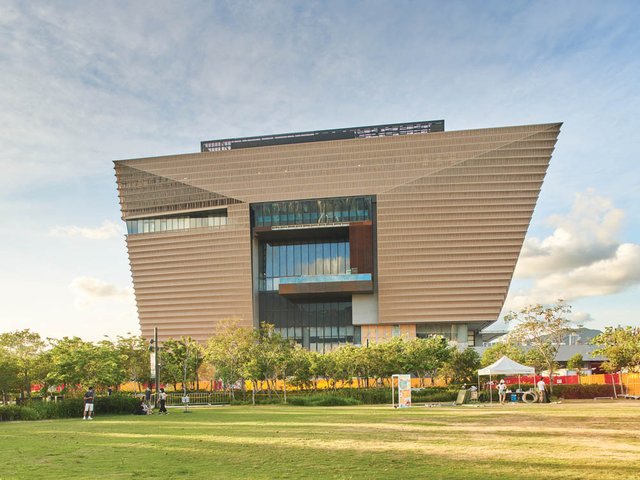A new branch of Taipei’s National Palace Museum in Chiayi, south Taiwan, has come under fire for its decision to show a group of bronze replicas donated by the Hong Kong action film superstar Jackie Chan. The government-funded museum, which has been in the works for more than 15 years, cost around NT$7.9bn ($250m).
The sprawling compound, around two hours by train from Taiwan’s capital, drew more than 20,000 visitors in the two weeks following its soft opening on 28 December. The institution, which officially opens in May, showcases several famous treasures on loan from its parent museum in Taipei, which has a collection of more than 600,000 Chinese artefacts.
But the group of statues donated by Chan has attracted the most attention—and criticism. Two Taiwanese activists, Chen Miao-ting and Chen Yi-ting, threw paint at the statues on 30 December and denounced the works as a form of cultural imperialism from mainland China. “We refuse to let any objects indicating [China’s] cultural united front strategy or replicas from other cultures be displayed in our arts and cultural palace,” they said in a statement. They have been charged with vandalism.
The statues were inspired by a set of bronze figures of the 12 animals of the Chinese zodiac looted during the sack of Beijing’s Summer Palace in 1860 by Anglo-French troops. The incident still resonates in China as a humiliation at the hands of foreign powers.
Chan, an avid art collector whose wife is from Taiwan, is seen as a pro-mainland figure. He is also known for flamboyant cultural gestures. In 2009, he donated several antique buildings to Singapore. The structures, which are around 350 years old, were uprooted from a town in southern China. More than 20 Chinese craftsmen flew to Singapore to restore the structures, which are due to open on the campus of the Singapore University of Technology and Design later this year.




